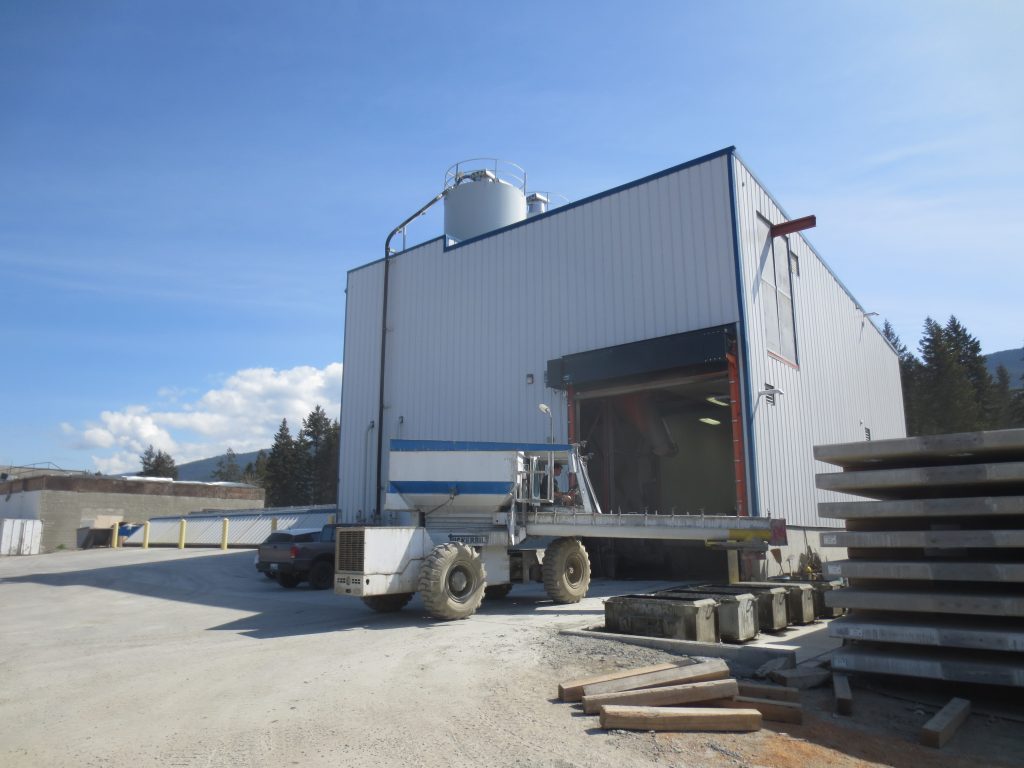Although it is located in the small city of Armstrong, B.C., which has a population of 5,000, a precast/prestressed concrete company has won customers in Canada and the U.S., Central America and parts of the Caribbean and South America.
It has done it, in part, because of the technological advancement of its facility.
With a head office in British Columbia’s North Okanagan and fabrication facilities in B.C. and Alberta, Rapid-Span Precast Ltd specializes in manufacturing concrete infrastructure products for industry and government.
Employing a full-time staff of 125, Rapid-Span has a precast capacity of 30,000 tonnes per year.
“We believe we’re the furthest north structural precaster in B.C.,” said Tamer Akkurt, the company’s vice-president of marketing.
When it started out in 1983, Rapid-Span specialized in building the components for, and assembling, bridges used by the B.C. forestry industry.
“Rapid-Span began as a small precast manufacturer that used ready-mix concrete from a local supplier,” said Akkurt. “The company grew and, when the man who started the company passed away, local investors bought it and kept it going.”
As the operation grew and as the company acquired more customers it needed an increasing amount of concrete from the local supplier as well as a growing number of sophisticated mix designs.
“Sometimes we ordered as many as half-a-dozen different mixes a day,” said Akkurt.
Realizing it was time to make a change in the way it operated, the company decided five years ago to invest in a state-of-the-art concrete batch plant facility.
“Rapid-Span spent a year doing research before it decided on a design for the plant,” said Akkurt. “It’s not huge, but not small, either. It’s a unique design because the facility needs to be able to produce different concrete mixes that satisfy different, and strict, government specifications.”
Greg Thiessen, Rapid-Span’s vice-president of operations, said the key to the company being able to achieve its accurate concrete mix results is the plant’s advanced technology.
“Without computerization and sensors, there is a lot of guess work and the final product is not nearly as consistent,” said Thiessen.
In Rapid-Span’s concrete plant, aggregates are stored underground to protect them from the temperature extremes of Armstrong’s hot summers and cold winters.
“Temperature variations in the aggregate need to be monitored and mitigated, because concrete can shrink and crack if its temperature goes too high.” said Thiessen.
Another high-tech feature of the plant is moisture probes that measure the amount of water in the aggregate, to ensure the correct amount of water is used to make each batch of concrete.
“This enables Rapid-Span to create a consistent concrete mix in every batch,” said Thiessen.
In addition, the plant has sensors to make sure that all of the components of the concrete are the correct weight for each batch.
“The sensors are looking for a specific viscosity of each mix,” said Thiessen. “In the old days, before sensors and computers, the measuring was done by sight and with the benefit of expertise and experience.”
Because the plant is located on top of an environmentally-sensitive aquifer, it has a unique Italian recycling system that reuses 100 per cent of the wastewater the plant produces.
The heart of the operation is a centre rotating pan mixer, made by Wiggert & Co. GmbH in Germany.
“It’s very aggressive and achieves a very good mix quickly,” said Thiessen. “There are very few of the mixers in Canada.”
According to Wiggert, the planetary counter-current mixer creates a homogeneous concrete mix “within the shortest possible time.”
The rotating mixing stars revolve around the centre vertical axis of the mixer, delivering counter-current mixing action that transfers all of the mixing energy directly into the concrete.
Most of Rapid-Span’s precast structural components are used in North America for such infrastructure projects as bridge decks, girders, beams, stairs, parkade components, roof slabs, docks and floats.
A recent application was more out of the ordinary.
An engineering company working on a wind farm in northern B.C. was looking for a way to build the bases of the wind turbines without having to pour ready-mix concrete into forms, something for which the remote location of the project presented a logistical challenge.
So Rapid-Span manufactured precast components that became the base of each wind turbine, which eliminated much of the cast-in-place concrete field work.











Recent Comments
comments for this post are closed